Day 2 of a 3-day Winter & Brecks tour in Norfolk. It was another rather wet and windy day, particularly in the afternoon – we managed to dodge the showers in the morning, although there was no escaping the rain later and thankfully the worst of the wind missed us. As usual, we made the best of it.
Having had untickable views of the Tawny Owl at Titchwell yesterday, and with several of the group keen to see one, we headed down first thing this morning to see if we could see our regular one while the weather was OK. A couple of Greenfinches were chattering in the hedge as we got out of the minibus, but otherwise it was quiet and rather breezy as we walked out along the footpath.
Thankfully, we came round the corner and the Tawny Owl was perched at the entrance to its usual hole again, despite the weather. We got the scope on it and had some great views – it was awake and looking at us at first, had a doze for a while, then woke up again when a Grey Squirrel and a couple of Jackdaws landed close to its hole. Once again, it was totally unfazed by our presence on the footpath, a discrete distance away. A great way to start the day.
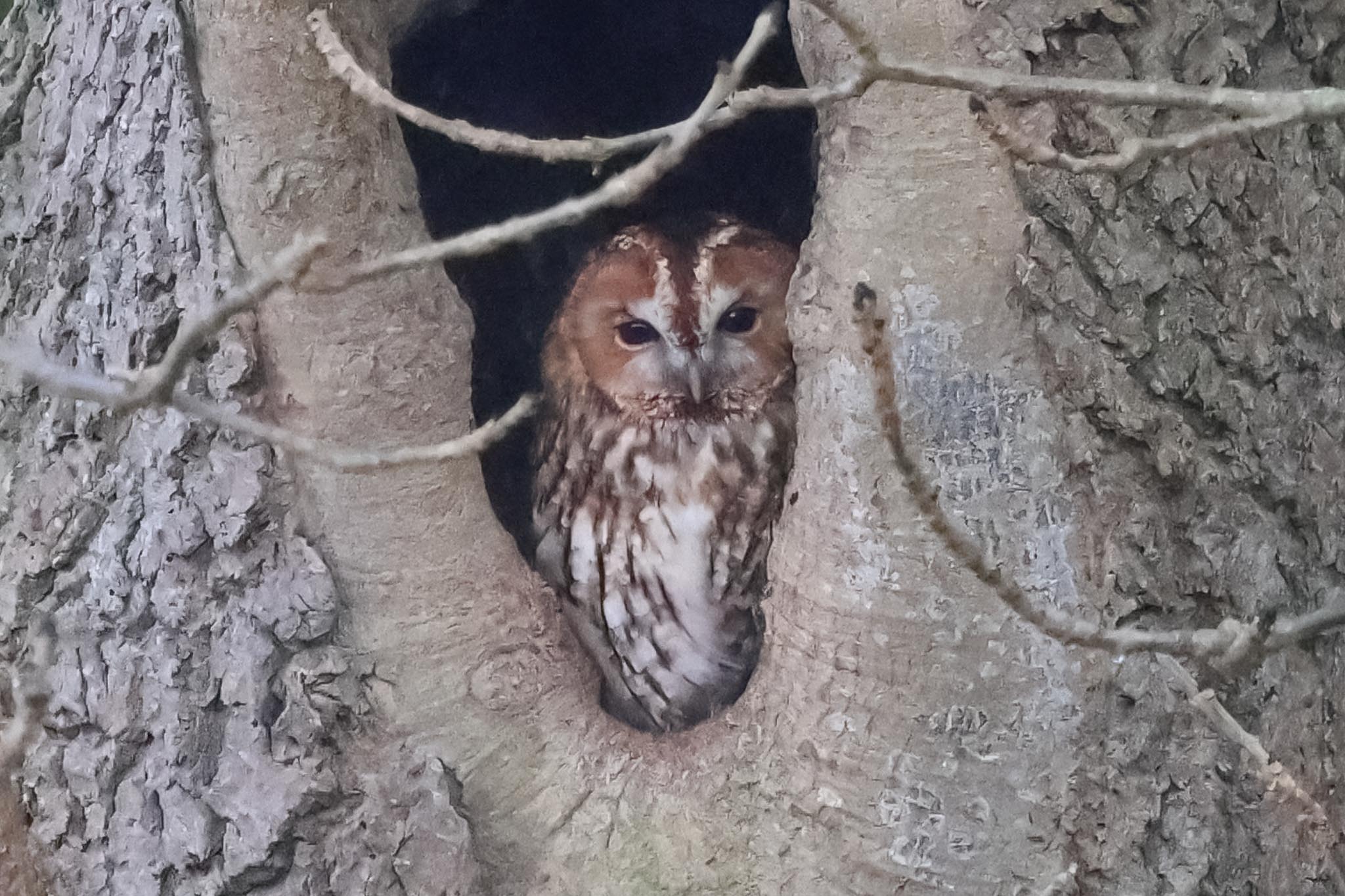
On our way west along the coast road, we had a scan of the grazing marshes at Stiffkey. The Glossy Ibis which has spent most of the winter here had not been seen this week – after the recent rain, many of the wet grassy areas where it had been feeding have been flooded again and it tends to be easier to locate when the water levels are falling – but we thought we should have a quick look as we were passing. There were lots of Wigeon and Teal on the floods. It has sometimes been feeding with a flock of Curlew, but we could only find one today, and a single Oystercatcher too.
We called in at the pools east of Wells next. We had a quick look through all the Teal and the Wigeon and there were only a couple of lone Brent Geese. Several small skeins of Pink-footed Geese flew inland over Wells and a small ‘v’ came in and flew over our heads. A lot of the Pink-footed Geese have departed north already, so it is always nice to see and hear them still now.
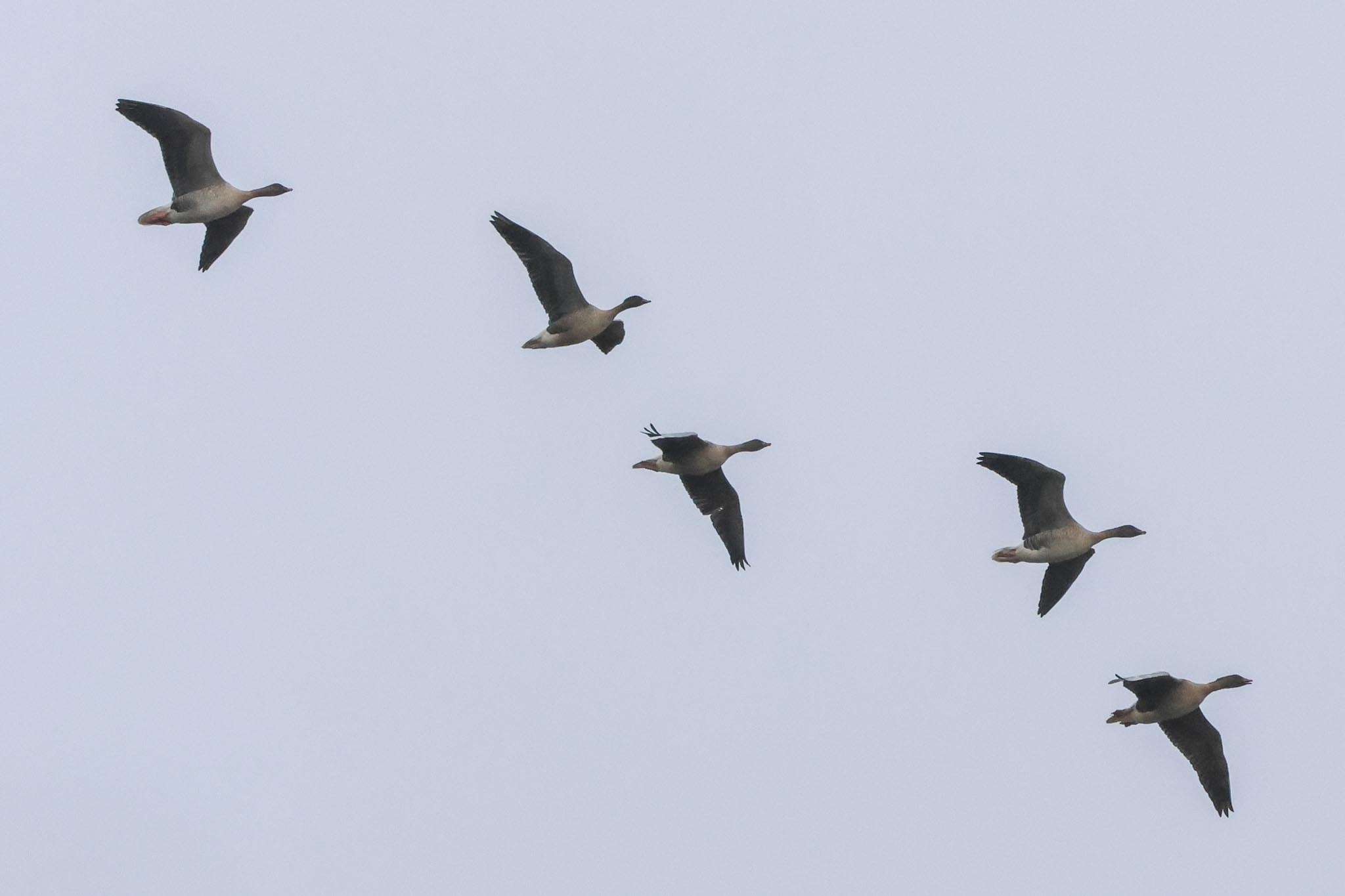
The raptors were enjoying a bright spell now and the freshening breeze. A Red Kite and a Marsh Harrier were up over the pig fields and a Common Buzzard was perched on the hedge. Another couple of Marsh Harriers were hanging in the air over towards Wells. A male came in over the stubble field beyond with exaggerated wingbeats and looked like it might start displaying. Sure enough, it gained height, turned, and started to drop sharply, ending with a couple of dramatic swoops before a female appeared below. Smart.
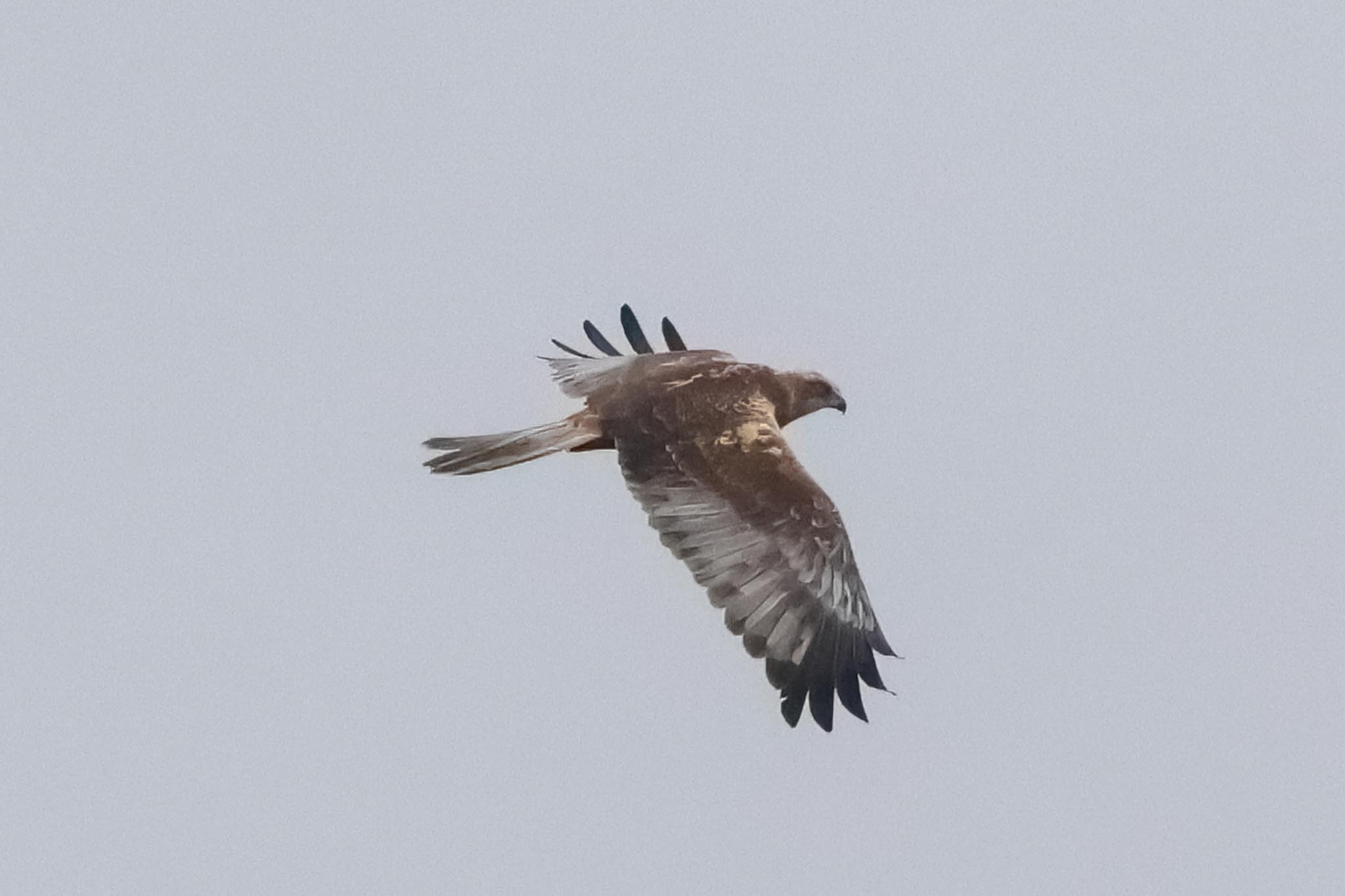
We could see dark clouds approaching from the south, so we waited until they were almost upon us. There were a couple of Skylarks singing and a few Meadow Pipits up and down out of the grass. Just as the rain arrived, we climbed in the minibus and drove through it to Wells beach car park.
By the time we had a short break to use the facilities, the rain had stopped but we checking the rainfall radar we could see a big weather front approaching. It looked like we might have 45 minutes before it made it to us, so we walked up to the harbour. Three Red-breasted Mergansers flew off from the shallows beyond the sandbar as we got up past the Coastwatch hut and disappeared off inland.
A Bar-tailed Godwit was very close, just on the near edge of the harbour channel, so we got it in the scope. It found a particularly large worm and while it was wrestling with it, a Black-headed Gull flew in to try to steal it. The Bar-tailed Godwit flew and the gull chased after it for a while before giving up. Once the Bar-tailed Godwit had finished the worm, it flew in and landed again where it had been before so those who hadn’t seen it earlier could now get a close view of the distinctive patterning on its back.
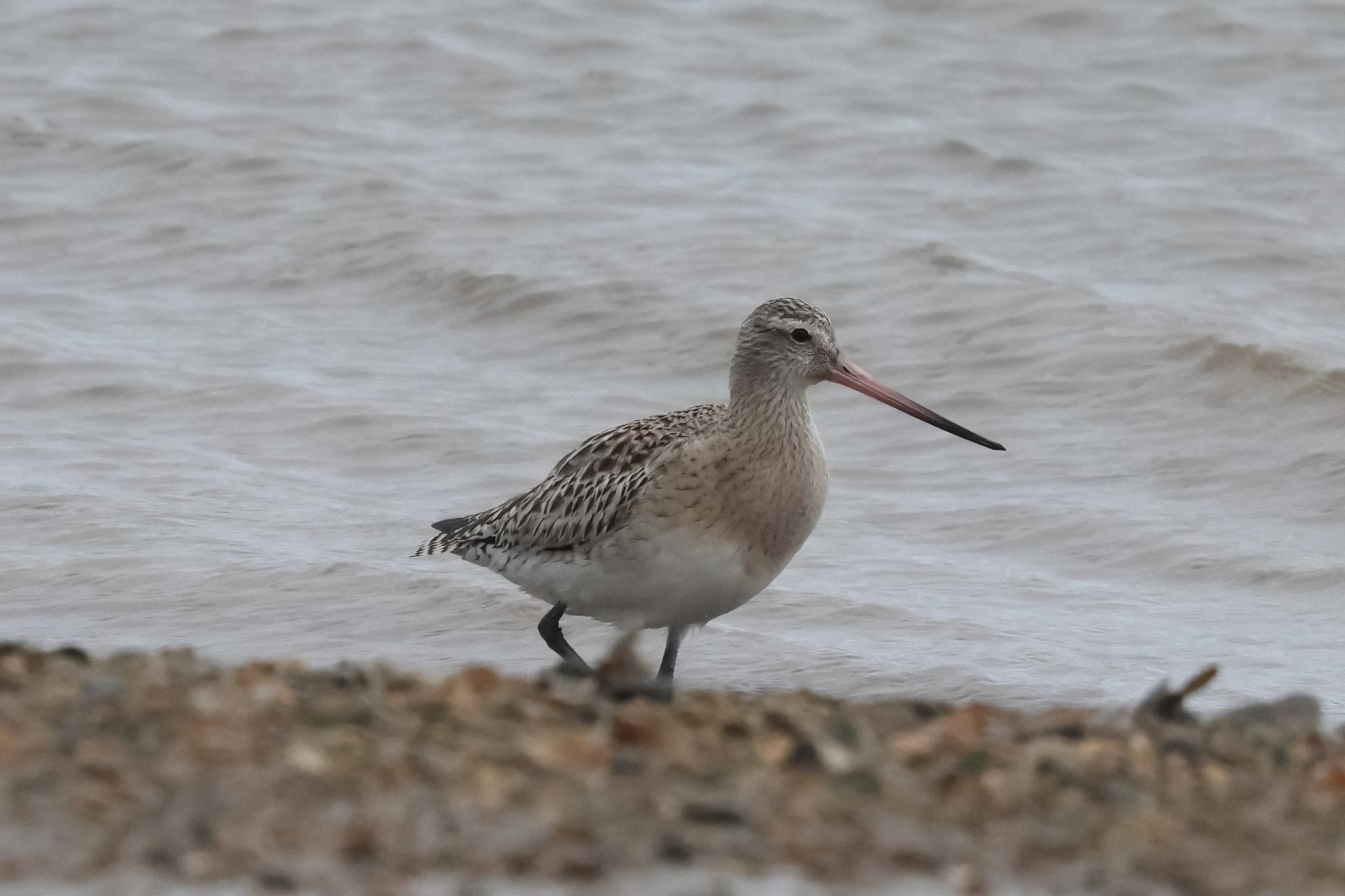
We could see a few Turnstones and a Grey Plover further out along the channel, but there were more waders further in, so we walked round to the site of the old lifeboat station. There was en excavator on a barge working in the channel, so more disturbance than usual today, but there were still lots of waders on the sand and mussel beds beyond. We got the scope on a mixed flock of Knot and Dunlin feeding further back, and several Ringed Plovers. There were lots of Oystercatchers and more godwits, but no sign of any other waders today. A Peregrine appeared briefly out over East Hills before dropping back away over the trees.
We could see the weather front approaching as we walked round the harbour, a very dark and threatening band of cloud. It was getting close now, so we walked back over to the minibus. As we drove back along the beach road, the heavens opened with heavy sleet. We had planned to spend the morning here and go to Holkham for lunch, but we figured we might be able to get out beyond the front by driving further west. We drove round via Burnham Norton and scanned the grazing marshes there from the minibus, but couldn’t find the Cattle Egrets today, just more Pink-footed Geese.
By the time we got to Brancaster Staithe, the rain had stopped so we got out. There was nothing here we hadn’t seen before but it is a lovely spot and it was nice to be able to stand and watch the birds without getting wet. There were more Bar-tailed Godwits, Dunlin, Ringed Plover and Grey Plover, several of them bathing in the shallows after getting wet in the downpour. A couple of Turnstones were almost feeding under the minibus at one point and more were picking around the piles of discarded mussels with more Oystercatchers. Several Brent Geese dropped down in the channel to bathe and we could see more groups feeding out on the saltmarsh beyond.
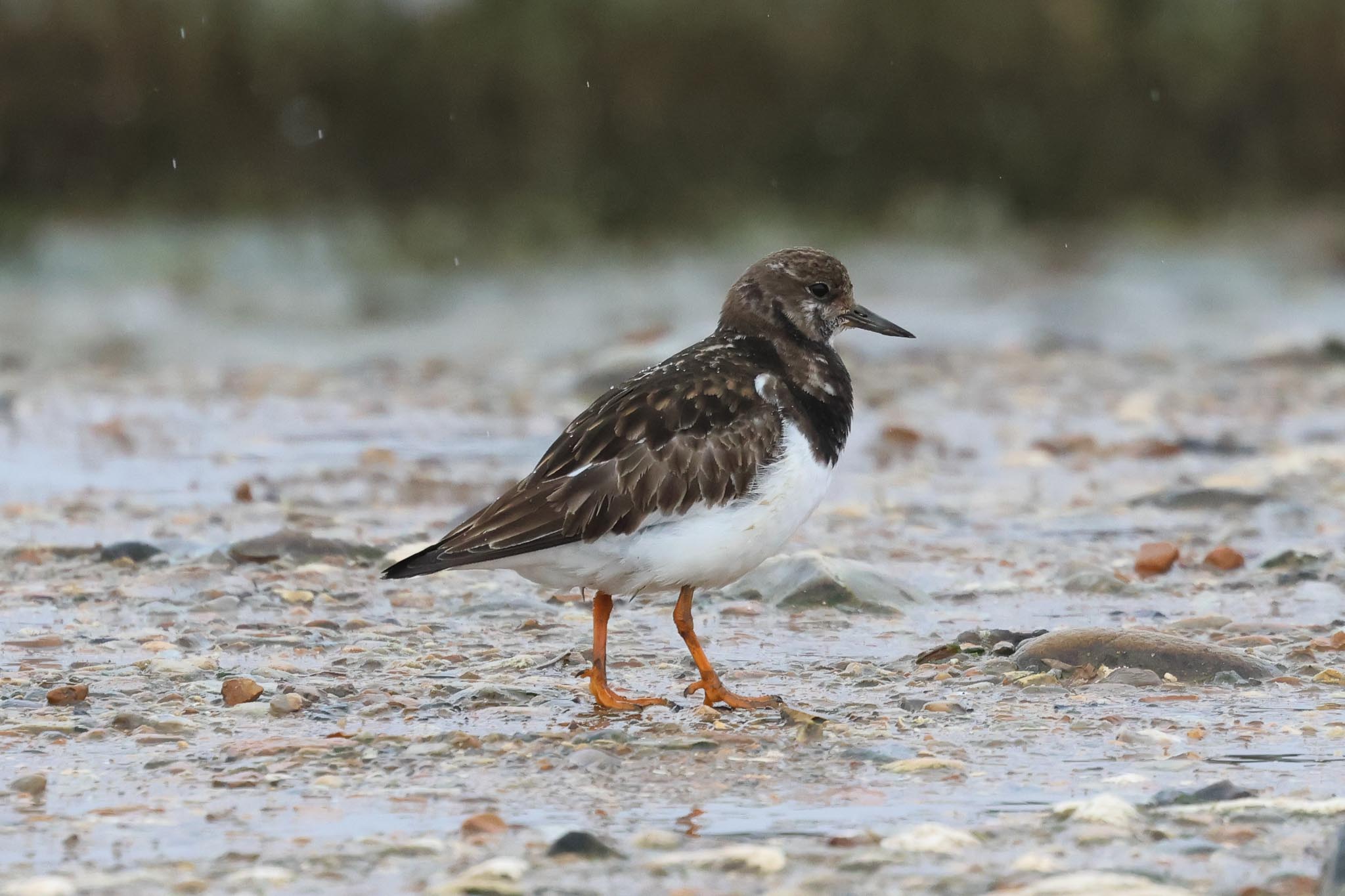
We had planned to go back to Titchwell for an early lunch, but checking the rainfall radar again, we could see that the dry weather might be short lived so we decided to carry on birding until the rain arrived. We drove round via Thornham village and quickly found the Cattle Egrets in their usual grassy field near The Lifeboat, five of them. Round at the harbour, we got out to scan. Unfortunately the Greenshank flew back up the channel and disappeared just as we got out, but there were more Redshanks, Grey Plover and Curlew here. A couple of Rock Pipits flew round calling.

Now it started to rain, so we drove round to Titchwell for a welcome hot drink at the cafe and a break for lunch. After lunch, it was drizzling steadily. We had thought we might go round to Snettisham to look for the Snow Buntings there, but they range over a large area so it might not be very pleasant today. A report had just come out of three Snow Buntings on the beach at Hunstanton, so we thought we might be able to find those without having to walk as far. We managed to find somewhere to park not too far away from the jetski ramp and walked over to the promenade. A couple of Fulmars flew past as we got out over the ridge.
There was no sign of the Snow Buntings where they had apparently been by the first set of steps, but there were a few dog walkers on the beach despite the rain so we figured they may have moved further down. There were a few waders on the shore, Oystercatchers, Sanderlings and Ringed Plovers. We set off to walk down to the corner, and the rain picked up a little. When we got to where we could see further down the coast, there were more dogs out on the beach there, and no sign of any Snow Buntings, just a few Turnstones on the seawall.
It looked like we were going to be out of luck, so with everyone getting wet and the conditions rather miserable, we turned to head back. About half way, we stopped to look at a couple of Ringed Plovers out on the beach. A male was displaying, bowing down to a female with its tail spread. When they walked further up the beach, there were the Snow Buntings hiding among the rocks. They were hard to see at first, but we got the scope on them and could see them sheltering from the weather. We walked back along the beach: they allowed us to approach quite close and only ran a short distance when a dog walker with dog off the lead came past very close to them, then flew a few metres and landed on the groyne.
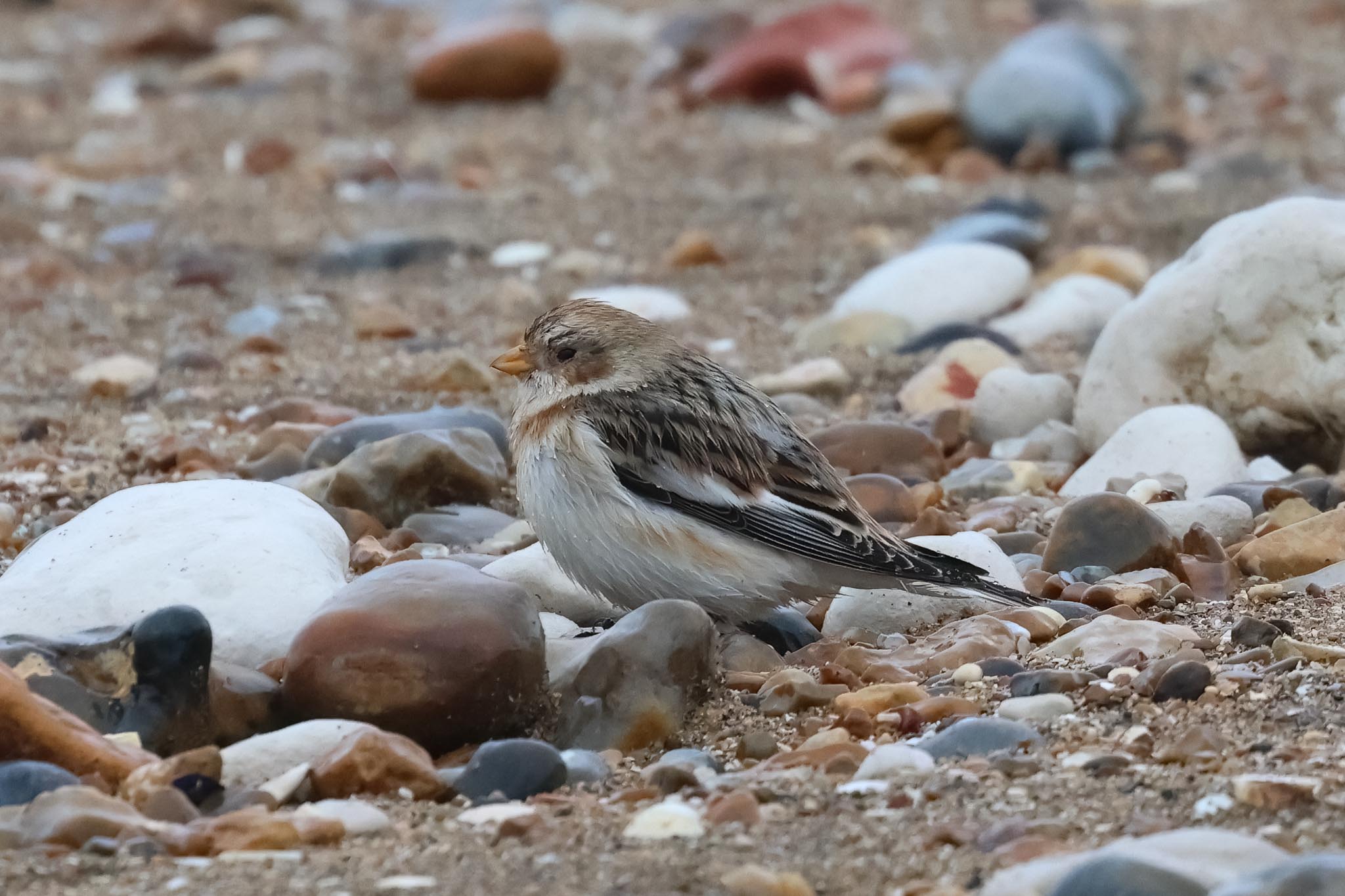
The rain wasn’t hard but was persistent and penetrating, so we were rather wet by the time we got back to the minibus. There was no sign of it stopping. The White-tailed Eagle had been reported from Holkham earlier this afternoon, so we figured we could go back to look for that without having to go far from the minibus. We stopped on Lady Anne’s Drive and scanned the trees, but we couldn’t see it – just a single Common Buzzard on a bush west of the north end of the Drive now. A Great White Egret was on one of the pools and there were lots of ducks, Wigeon, Teal and Shoveler, on the grazing marshes, but again we couldn’t see anything different – good weather for ducks!
We drove back out and round to the layby on the A149. We could see a few Spoonbills again out on the grazing marshes from here and lots of Cormorants in the trees, but no sign of anything larger. Checking the forecast, the rain was set in for the evening now. Visibility was poor too and the light was starting to go, so we decided to call it a day and head back for tea and cake in the warm.
















